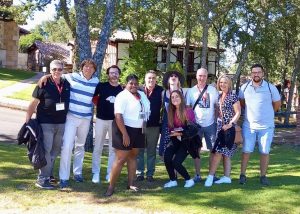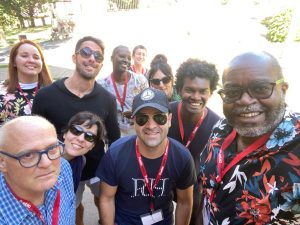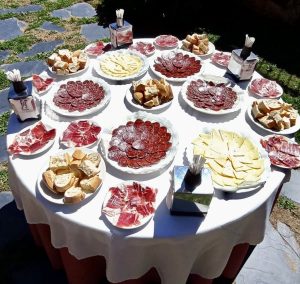We had a great time wandering around the USA visiting with family and friends, but now we are back in Europe.
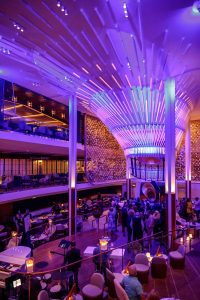 First a note about how we got here this time. We took a repositioning cruise from Florida to Barcelona. If you are not familiar with the idea of repositioning cruises, check out this article. The long and short of it is that we spent 14 days crossing the Atlantic on a cruise ship, with a lovely cabin and all the regular things that you would expect on a cruise for a fraction of the price. In addition to a amazing trip, we had the advantage of arriving without the usual jet lag of a transatlantic flight.
First a note about how we got here this time. We took a repositioning cruise from Florida to Barcelona. If you are not familiar with the idea of repositioning cruises, check out this article. The long and short of it is that we spent 14 days crossing the Atlantic on a cruise ship, with a lovely cabin and all the regular things that you would expect on a cruise for a fraction of the price. In addition to a amazing trip, we had the advantage of arriving without the usual jet lag of a transatlantic flight.
After one quick night in Barcelona, we caught a cheap flight on WizzAir to Poland. The first stop on our four-week trip to Poland was Wroclaw (pronounced Rots-lav). This was the meet up point for the first of three back-to-back English immersion programs.
Basically, what happens is that people who are learning English pay to attend a one-week intensive English only retreat. For each student, there is a native English speaker who is volunteering. So we got to see three amazing parts of Poland (really 6 if you count the departure cities). In exchange for volunteering, we got our housing food and excursions paid for. 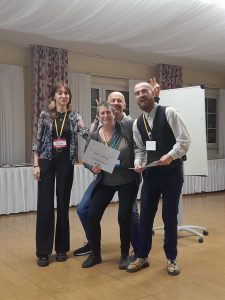 This time we did programs that were based out of Wroclaw, Krakow and Warsaw. We met some amazing people, both volunteers and students, sang some songs drank some wine and just generally had a fantastic time.
This time we did programs that were based out of Wroclaw, Krakow and Warsaw. We met some amazing people, both volunteers and students, sang some songs drank some wine and just generally had a fantastic time.
This is not the first time we have volunteered for English immersion programs. If you would like to learn more you ca check out our post about the school we attended in Germany and Spain. Or if you like to learn more (or volunteer yourself) check out the links below:
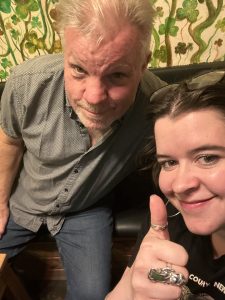

Once we had completed our third week of immersion schools, we were ready for a break, so we grabbed a little studio apartment and spent a week exploring Krakow. We ate amazing food, met up with friends we made over the last few weeks and acted like tourists, It was great.
On a more somber note, we did not feel like we could leave Krakow with taking the time to tour two of the biggest concentration camps in the area. This was especially poignant for us given the rise of authoritarianism in the world today. Between 1940 and 1945 1.1 million people died in just these camps, there are others like them. It is impossible to describe the experience, but it is these are places we feel every person should see. Those who forget the past are doomed to repeat it.
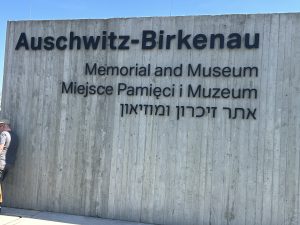
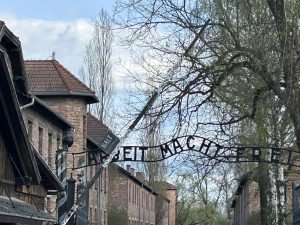
Coming up: we travel to Palermo to start our search for the best Cannoli in Sicily!


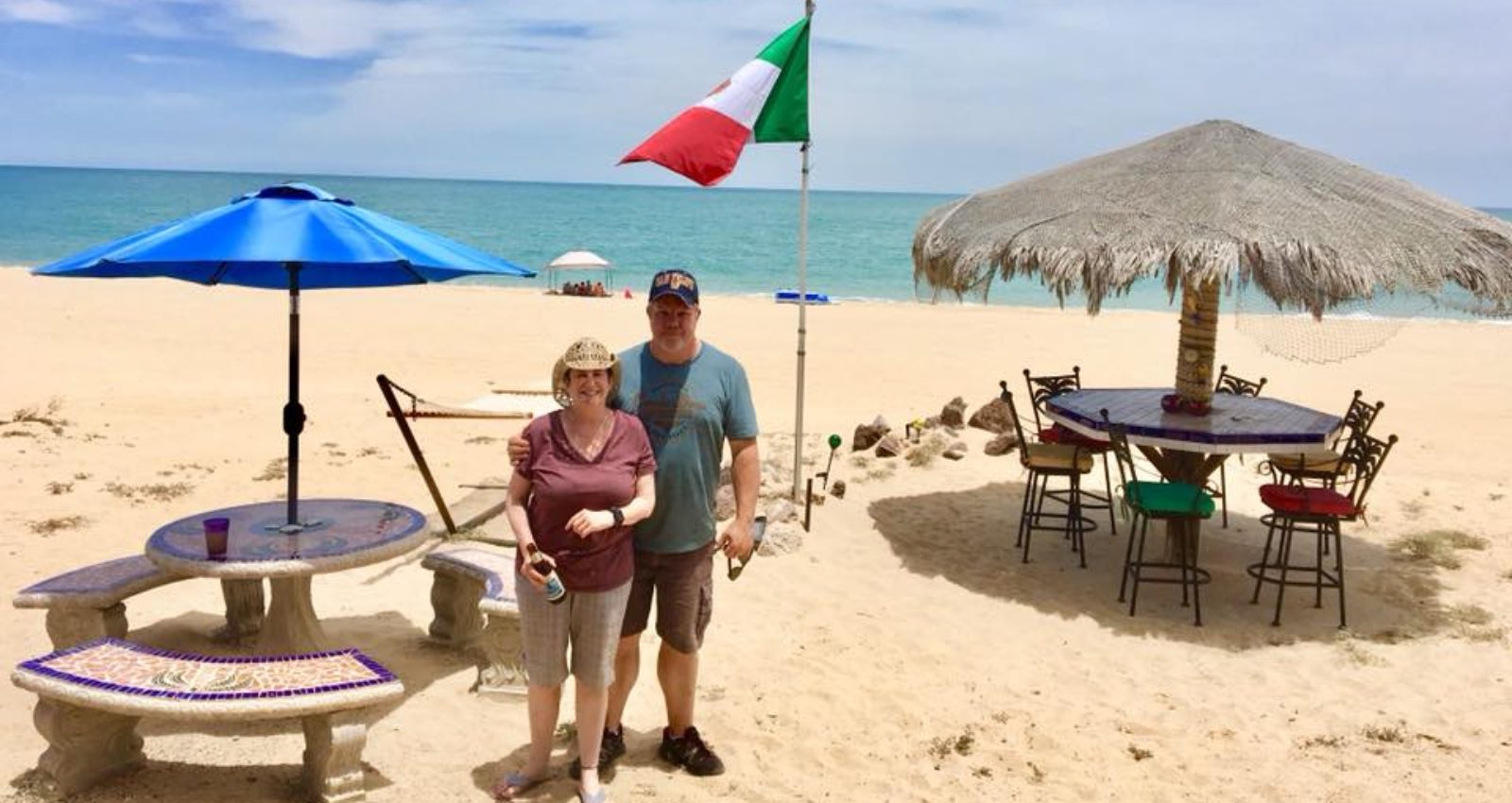
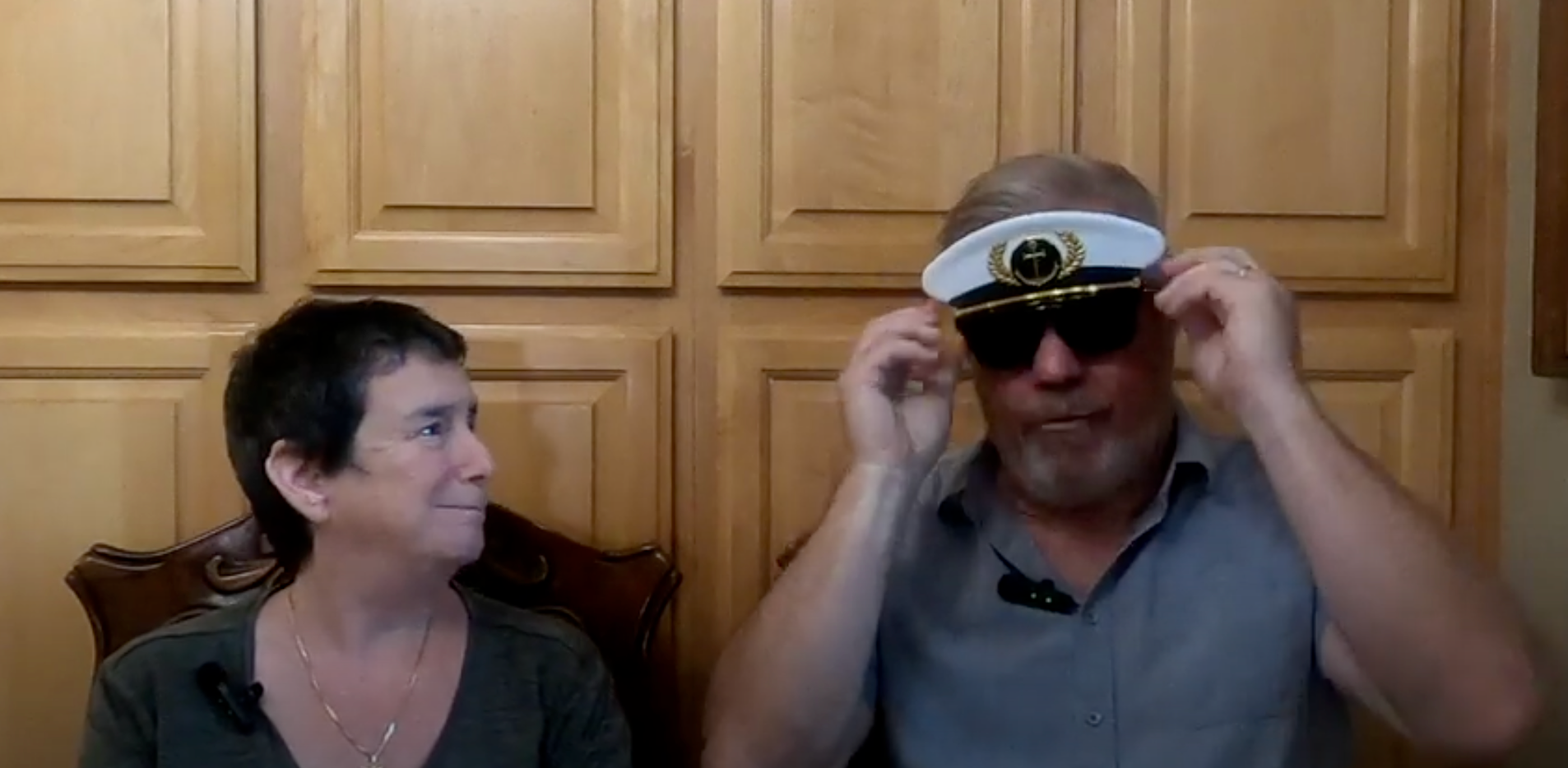
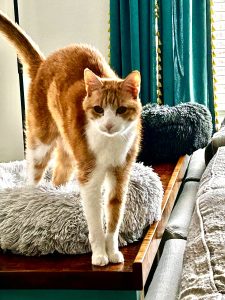

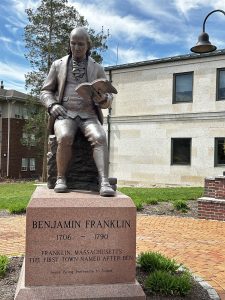 The town of Franklin was established in 1860. It was originally planned to be called Exeter, but as was the custom at the time at the last minute they changed the name of honor one of the heroes of the American Revolution. In this case, it was the statesman
The town of Franklin was established in 1860. It was originally planned to be called Exeter, but as was the custom at the time at the last minute they changed the name of honor one of the heroes of the American Revolution. In this case, it was the statesman  subscribers.
subscribers.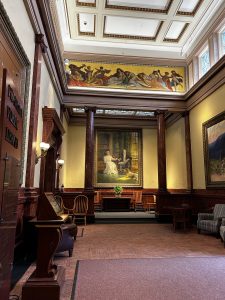 used by the proud citizens of Franklin. Among the early users of that library was local lad by the name of
used by the proud citizens of Franklin. Among the early users of that library was local lad by the name of  He got his law degree and later became the Secretary of the newly formed Massachusetts Board of Education. Mann’s work there led him to become widely known as the father of the American public education program.
He got his law degree and later became the Secretary of the newly formed Massachusetts Board of Education. Mann’s work there led him to become widely known as the father of the American public education program.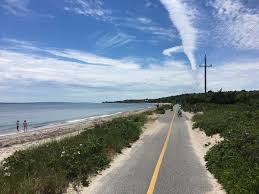 From here we’re off to see Niagara Falls, Mount Rushmore, Deadwood city and so much more of America…
From here we’re off to see Niagara Falls, Mount Rushmore, Deadwood city and so much more of America…
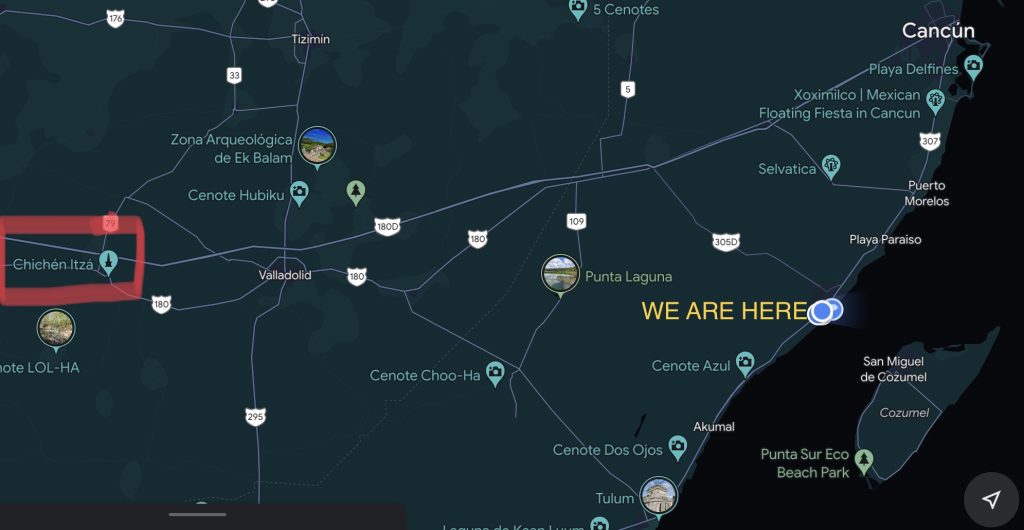
 Our first location included three very lovable dogs, Mouse, Coco and Brownie. We had a great time
Our first location included three very lovable dogs, Mouse, Coco and Brownie. We had a great time 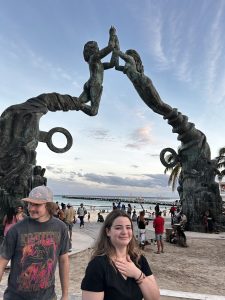 we were able to invites guests to come visit. In this case, our visitors were Bonnie’s niece Isabella and her friend Erik, from Seattle Washington.
we were able to invites guests to come visit. In this case, our visitors were Bonnie’s niece Isabella and her friend Erik, from Seattle Washington.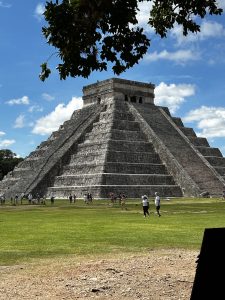 but the largest and most impressive is the pyramid called El Castillo. Wandering around the ruins is made even more entertaining by a horde of salespeople, each hawking souvenirs ranging from jaguar calls to tee shirts and wooden carvings. Everything is “on sale today” and “so cheap it’s almost free”.
but the largest and most impressive is the pyramid called El Castillo. Wandering around the ruins is made even more entertaining by a horde of salespeople, each hawking souvenirs ranging from jaguar calls to tee shirts and wooden carvings. Everything is “on sale today” and “so cheap it’s almost free”.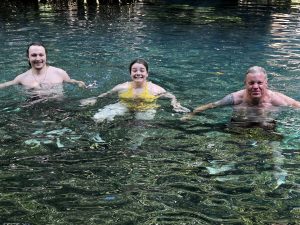 water. Many have caves that you can explore. There are thirteen of these Cenotes (pronounced see-NO-tay) around Playa Del Carmen. We chose one called Cristalino which, we were advised, is a bit less packed with tourist. The water was in fact crystal clear and blue and not as cold as I expected. We had a great time swimming around and checking out the caves. I’d you sit and dangle your feet in the water, little fish swim up and nibble at the dead skin on your feet. Assuming you are not too ticklish, it is a natural pedicure for free.
water. Many have caves that you can explore. There are thirteen of these Cenotes (pronounced see-NO-tay) around Playa Del Carmen. We chose one called Cristalino which, we were advised, is a bit less packed with tourist. The water was in fact crystal clear and blue and not as cold as I expected. We had a great time swimming around and checking out the caves. I’d you sit and dangle your feet in the water, little fish swim up and nibble at the dead skin on your feet. Assuming you are not too ticklish, it is a natural pedicure for free.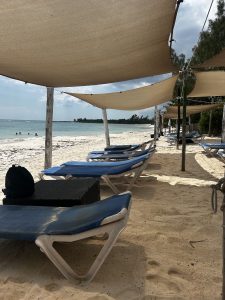 After the Cenote, we drove to a nearby beach, where for a very reasonable price we rented beach chairs under shady umbrellas and enjoyed cocktails by the ocean. The weather was delightful, the ocean clear and cool and the service amazing. It is easy to see why this area is the topic of so many songs about escaping for a beach holiday.
After the Cenote, we drove to a nearby beach, where for a very reasonable price we rented beach chairs under shady umbrellas and enjoyed cocktails by the ocean. The weather was delightful, the ocean clear and cool and the service amazing. It is easy to see why this area is the topic of so many songs about escaping for a beach holiday.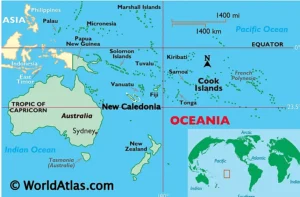 Islands, is a French territory called New Caledonia. The largest of these islands is Grande Terre, where there is an international airport near a popular tourist town called Noumea.
Islands, is a French territory called New Caledonia. The largest of these islands is Grande Terre, where there is an international airport near a popular tourist town called Noumea.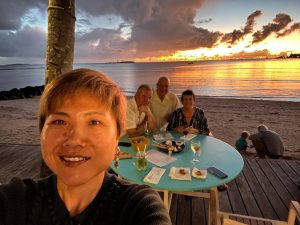 .
. 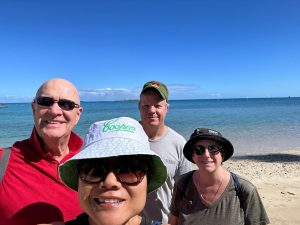
 shops. Typically, we would have stolen Tom away for some scuba diving, but due to recent bull shark attacks in the local waters there was no ocean swimming allowed.
shops. Typically, we would have stolen Tom away for some scuba diving, but due to recent bull shark attacks in the local waters there was no ocean swimming allowed.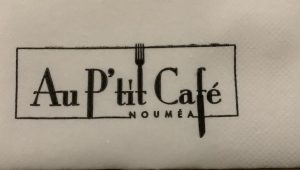 the most extraordinary French food (and wine) we have ever had. We enjoyed one unforgettable restaurant after another.
the most extraordinary French food (and wine) we have ever had. We enjoyed one unforgettable restaurant after another.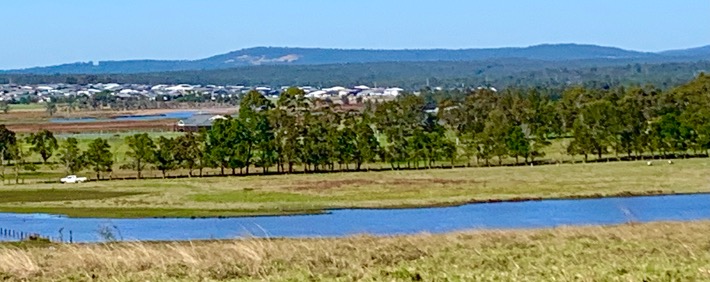
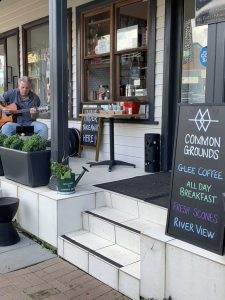 couple of hours on Sunday. Nathan works at the local
couple of hours on Sunday. Nathan works at the local 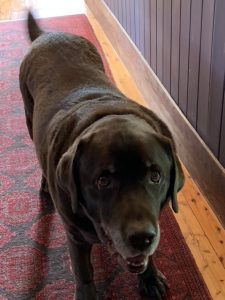 Arthur is a big boy, as one local commented this morning he has been “feedin’ in a healthy paddock”. This is just one of many colorful turns of phrases we have heard. One chap outside of the small grocery store commented about the wind, which was “strong enough to blow a dog off his chain”. Another person commented that she did not remember how many it was, but she was “still on her hands”; which we later learned means that it was less than 10, as she could still count them on her fingers.
Arthur is a big boy, as one local commented this morning he has been “feedin’ in a healthy paddock”. This is just one of many colorful turns of phrases we have heard. One chap outside of the small grocery store commented about the wind, which was “strong enough to blow a dog off his chain”. Another person commented that she did not remember how many it was, but she was “still on her hands”; which we later learned means that it was less than 10, as she could still count them on her fingers.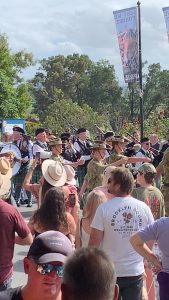 town. ANZAC stands for Australian, New Zealand, Army Corps. It was quite a big event for the little town of Morpeth. Arthur had a great time resting on the sidewalk out in front of the pub, where many folks in colorful attire and a chest full of ribbons stopped to give a head scratch or belly rub.
town. ANZAC stands for Australian, New Zealand, Army Corps. It was quite a big event for the little town of Morpeth. Arthur had a great time resting on the sidewalk out in front of the pub, where many folks in colorful attire and a chest full of ribbons stopped to give a head scratch or belly rub.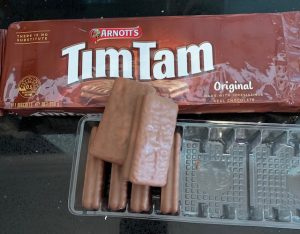 Arnott family.
Arnott family. 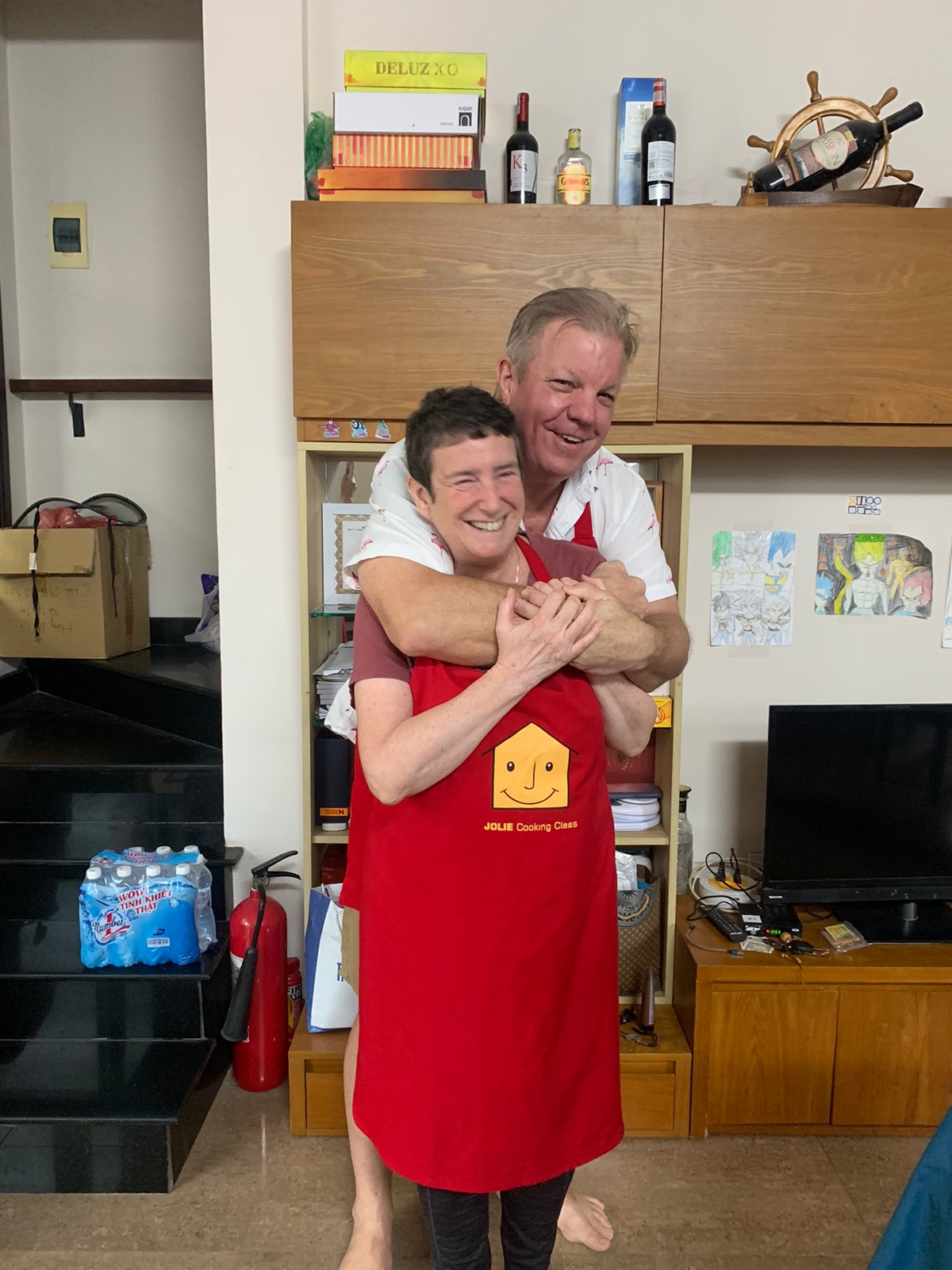
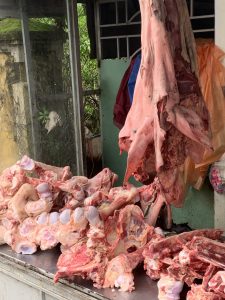
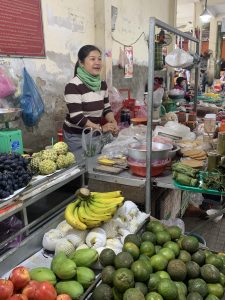 us was included in the cooking class. We elected to take the class in Hoi Ann to see a bit more of the surrounding area. 40 minutes, and some beautiful scenery later, we arrived at one of the local markets. Jolie met us and guided us through the markets, explaining how to pick the various fruits, vegetables, herbs and meats that we would use in out cooking class later. Once loaded up with our raw materials we left the markets and stopped for a coffee before we started cooking. This was great, as it allowed us some time to meet the other folks that were in taking the class. In total there were only 6 of us in the class that day, a perfect sized group.
us was included in the cooking class. We elected to take the class in Hoi Ann to see a bit more of the surrounding area. 40 minutes, and some beautiful scenery later, we arrived at one of the local markets. Jolie met us and guided us through the markets, explaining how to pick the various fruits, vegetables, herbs and meats that we would use in out cooking class later. Once loaded up with our raw materials we left the markets and stopped for a coffee before we started cooking. This was great, as it allowed us some time to meet the other folks that were in taking the class. In total there were only 6 of us in the class that day, a perfect sized group.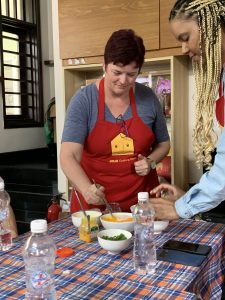 hostel and the cooking school. Were greeted by three young ladies, each more delightful than the last. These three under, Jolie’s careful tutelage served us delicious orange tea and then helped us prepare three amazing local dishes. Despite the fact that Matt & Bonnie are the real cooks in the group, we all were encouraged to get involved in the food prep. Of course, there was a lot of laughter, fun and singing (the girls have beautiful voices) throughout the perpetration.
hostel and the cooking school. Were greeted by three young ladies, each more delightful than the last. These three under, Jolie’s careful tutelage served us delicious orange tea and then helped us prepare three amazing local dishes. Despite the fact that Matt & Bonnie are the real cooks in the group, we all were encouraged to get involved in the food prep. Of course, there was a lot of laughter, fun and singing (the girls have beautiful voices) throughout the perpetration.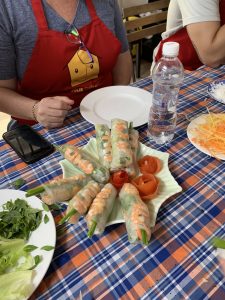 With the aid of some flash cards, the girls taught how to properly pronounce the names of each one of the dishes. The also taught us how to make very clever garnishes including rosed made from tomato skins and flowers made from red hot chilis.
With the aid of some flash cards, the girls taught how to properly pronounce the names of each one of the dishes. The also taught us how to make very clever garnishes including rosed made from tomato skins and flowers made from red hot chilis.
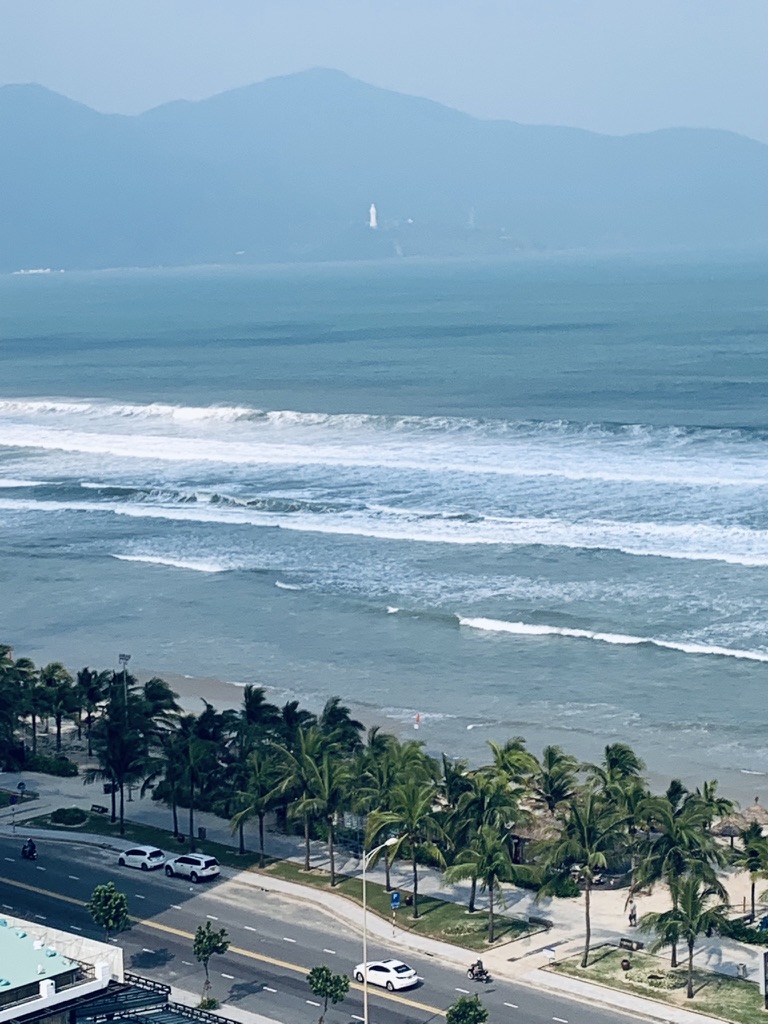
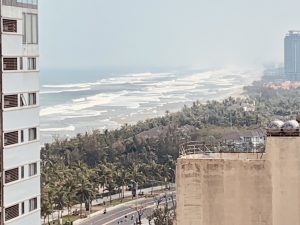 It’s been a little over two months since we arrived in Vietnam. We are settling in and really enjoy it. When we first arrived in Da Nang, we stayed at the
It’s been a little over two months since we arrived in Vietnam. We are settling in and really enjoy it. When we first arrived in Da Nang, we stayed at the 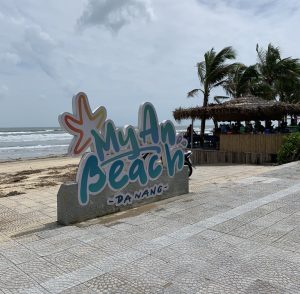 wandered around the big city for a couple of days, and then took the overnight train (about 14 hours) to Da Nang.
wandered around the big city for a couple of days, and then took the overnight train (about 14 hours) to Da Nang.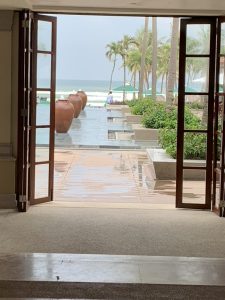 Alas, this also means that many of the functions of the city that were previously driven by a robust tax structure, such as street cleaning and sidewalk maintenance have fallen a bit behind. But even in the two short months that we have been here, we can see the signs of the end of the harsh “winter of covid”, new shops, restaurants and shops are beginning to open. A few more tourist are in the streets and in the hotels, and clean-up projects are more frequently seen.
Alas, this also means that many of the functions of the city that were previously driven by a robust tax structure, such as street cleaning and sidewalk maintenance have fallen a bit behind. But even in the two short months that we have been here, we can see the signs of the end of the harsh “winter of covid”, new shops, restaurants and shops are beginning to open. A few more tourist are in the streets and in the hotels, and clean-up projects are more frequently seen. here. They are among the kindest, happiest, and most hospitable people we have encountered anywhere in the world. People you pass on the street, always seem to have a big smile and a big Xin Chao (shin chow) which means hello. With few exceptions, they are not trying to sell you something or ask for money, they are just genuinely friendly folks!
here. They are among the kindest, happiest, and most hospitable people we have encountered anywhere in the world. People you pass on the street, always seem to have a big smile and a big Xin Chao (shin chow) which means hello. With few exceptions, they are not trying to sell you something or ask for money, they are just genuinely friendly folks! house full of friends. We are really looking forward to showing off Da Nang to more friends who are coming to visits in the coming months.
house full of friends. We are really looking forward to showing off Da Nang to more friends who are coming to visits in the coming months.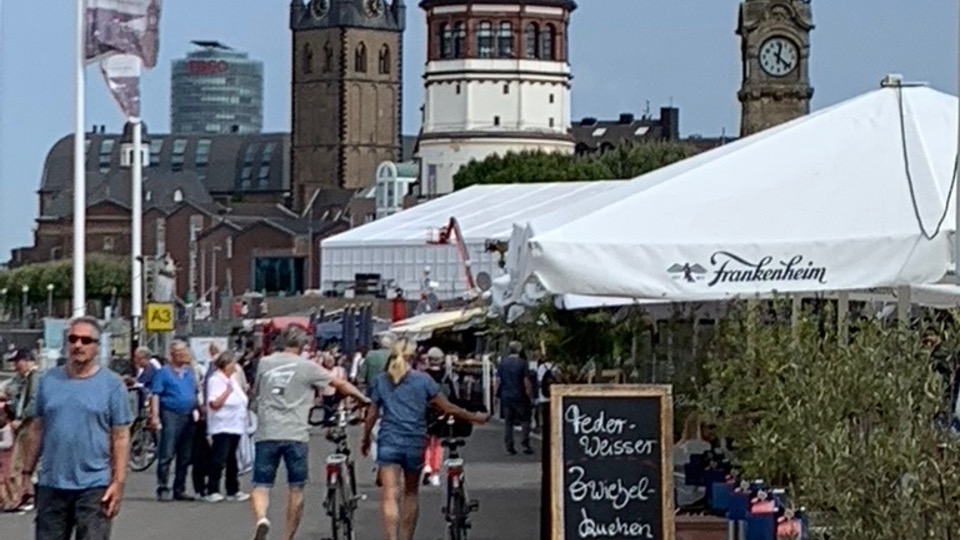
 until he is awake and up. Thus, they have us trained to get up and feed them promptly in the morning.
until he is awake and up. Thus, they have us trained to get up and feed them promptly in the morning.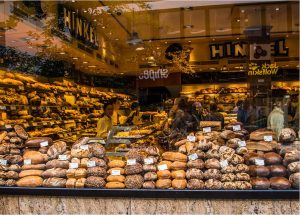 we love cruising through the Carlsplatz Market. A collection of specialty stalls including bread shops, cheese mongers, butchers and flower shops. Once we decide on an evening meal, we are off foraging.
we love cruising through the Carlsplatz Market. A collection of specialty stalls including bread shops, cheese mongers, butchers and flower shops. Once we decide on an evening meal, we are off foraging.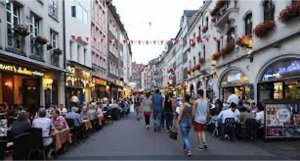 New Orleans, this area has a quiet peaceful personality during the day and a completely different frenetic energy at night.
New Orleans, this area has a quiet peaceful personality during the day and a completely different frenetic energy at night.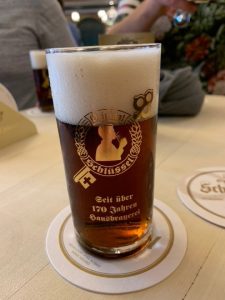 the local breweries. The tour involved walking around old town, stopping at several different breweries, and trying their beers, while learning more about beer in Germany. We learned that each region makes it’s own stlye of beer and that there are very strict regulations about what ingredients can be added to beer made here. This is limited to malted grain, hops, yeast, and water. No other ingredients and additives are allowed. We also learned about a special style of beer which is fermented with yeast that works from the bottom of the vessel up (as opposed to most which consume the sugar from the top down). These bottom fermented beers are called Altbier (“alt” beer) and have a distinctive taste.
the local breweries. The tour involved walking around old town, stopping at several different breweries, and trying their beers, while learning more about beer in Germany. We learned that each region makes it’s own stlye of beer and that there are very strict regulations about what ingredients can be added to beer made here. This is limited to malted grain, hops, yeast, and water. No other ingredients and additives are allowed. We also learned about a special style of beer which is fermented with yeast that works from the bottom of the vessel up (as opposed to most which consume the sugar from the top down). These bottom fermented beers are called Altbier (“alt” beer) and have a distinctive taste.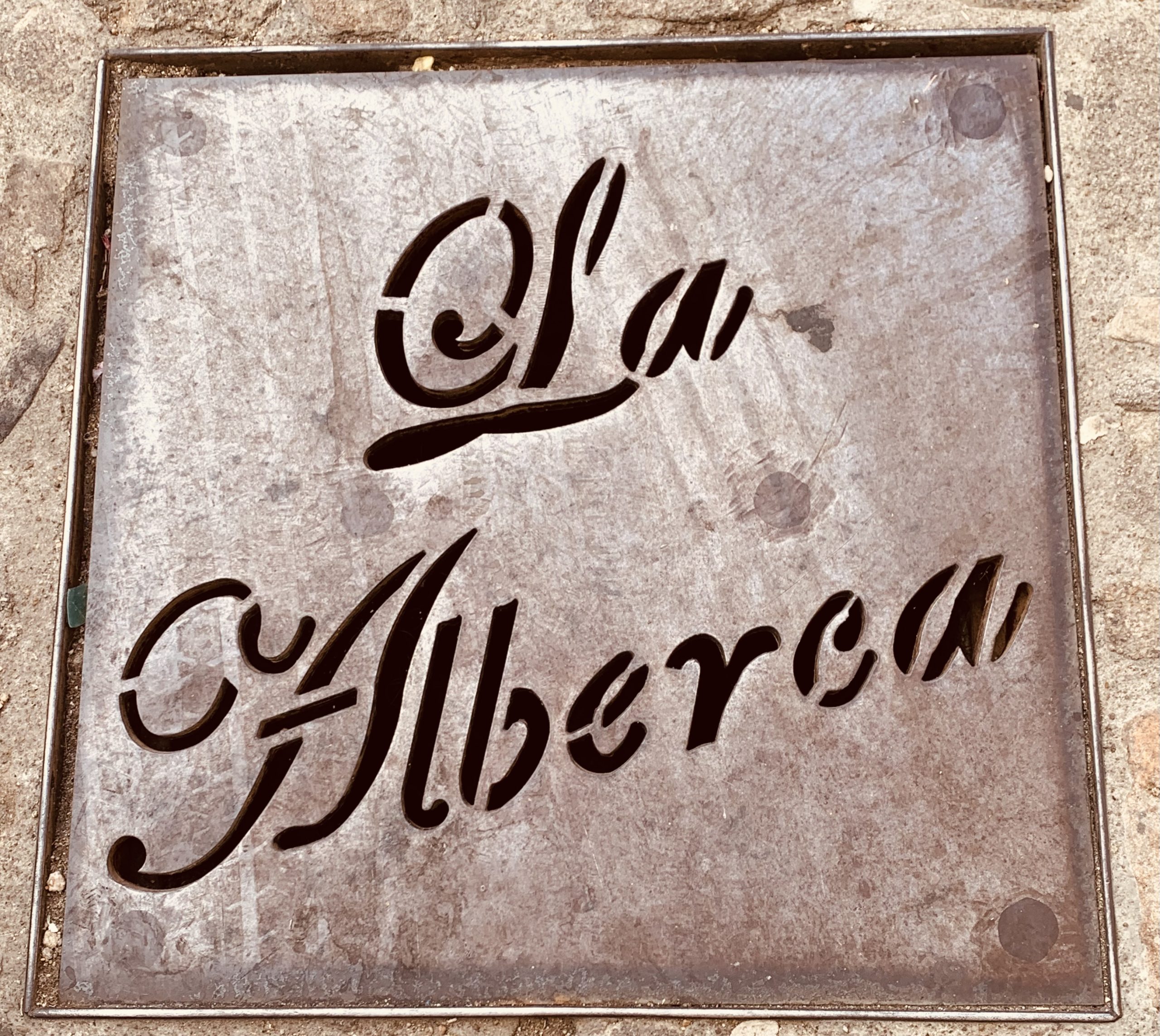
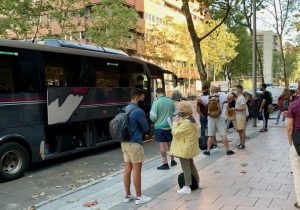 from sweltering Madrid to the much more temperate climate of the mountains in La Alberca. The program coordinator Cristina, an American transplant who now lives in Spain, guided us onto the bus and let us know what to expect for the day.
from sweltering Madrid to the much more temperate climate of the mountains in La Alberca. The program coordinator Cristina, an American transplant who now lives in Spain, guided us onto the bus and let us know what to expect for the day.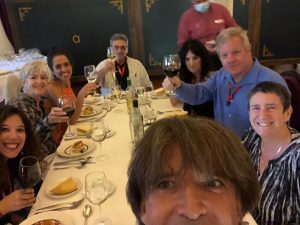 Each day started around 9:00am with a buffet breakfast where tables sat four (always had two Anglos and two students). Immediately after breakfast there we activities aimed at boosting the student’s vocabulary and general comfort with English.
Each day started around 9:00am with a buffet breakfast where tables sat four (always had two Anglos and two students). Immediately after breakfast there we activities aimed at boosting the student’s vocabulary and general comfort with English.
